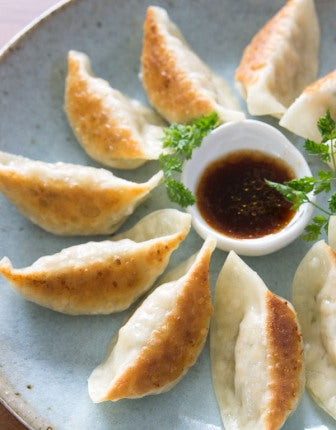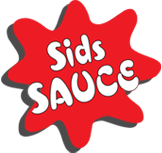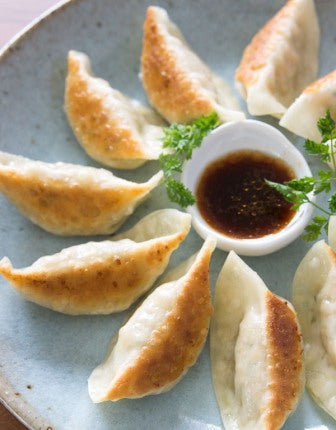Vegan Gyoza
Vegan Gyoza
This dish is so flavoursome that it will be enjoyed by everyone.
Ready in: 50 minutes
Serves: 6
Complexity: easy
kcal: 122
Share

Ingredients
1 pkt firm tofu
½ cup quinoa
200 g cabbage
4 spring onions, sliced fine
2 cloves garlic, minced
1 knob root ginger
2 tbsp sesame oil
1 tbsp soy
1 tbsp saké or dry sherry
1 tbsp cornflour
½ tsp SIDS CRAZY SALT
¼ tsp ground black pepper
2 dried shiitake mushrooms
40 gyoza wrappers
Rice bran oil
DIPPING SAUCE:--
2 tbsp soy
2 tbsp SIDS RASPBERRY VINEGAR
1 tsp chilli oil
Directions
Freeze the tofu overnight. Defrost, wash and squeeze out as much water as possible. Wash the quinoa and cook in 1 cup of water. Add to a bowl with the tofu when cooked. Boil the cabbage for 1-2 minutes only. Drain and run under cold water to cool. Shake out excess water then mince and add to the tofu and quinoa. Blitz the dried shiitake mushrooms to a powder. Mix all the ingredients (including SIDS CRAZY SALT but not including the sauce ingredients) thoroughly together using your hand in a kneading action. Take the gyoza wrapper in your hand and place a tablespoon of the mixture in the centre of the wrapper. Moisten the edge along the lower half of the wrapper and fold the upper half of the wrapper up to meet the the moistened edge. Fold one of the edges in a series of pleats, (about 6) leaving the other edge smooth. Press the edges together to seal the gyoza. Repeat for the rest of the wrappers.
Add oil to a wok on medium-high and fry the smooth side until golden brown. Carefully add the water and cover with a lid. Cook until the water boils away. Mix soy, SIDS RASPBERRY VINEGAR and chilli oil together for the dipping sauce.
History: Traditionally, jiaozi (Gyoza) were thought to invented by Zhang Zhongjing during the Eastern Han, who was one of the greatest practitioners of traditional Chinese medicine in history. They were originally referred to as "tender ears" because they were used to treat frostbitten ears.
Tofu, also known as bean curd, is a food made by coagulating soy milk and then pressing the resulting curds into soft white blocks. It is a component in East Asian and South East Asian cuisines. There are many different varieties of tofu, including fresh tofu and tofu that has been processed in some way. Tofu is bought or made to be soft, firm, or extra firm. Tofu has a subtle flavour and can be used in savoury and sweet dishes. It is often seasoned or marinated to suit the dish. Tofu originated in Han dynasty in China some 2,000 years ago. Chinese legend ascribes its invention to prince Lui An. (179–122 BC) Tofu and its production technique were introduced into Korea and then Japan during the Nara period. (710–794) Some scholars believe tofu arrived in Vietnam during the 10th and 11th century. It spread into other parts of East Asia as well. This spread probably coincided with the spread of Buddhism because it is an important source of protein in the vegetarian diet of East Asian Buddhism. Li Shizhen in the Ming Dynasty described a method of making tofu in the Compendium of Materia Medica. Tofu has a low calorie count and relatively large amounts of protein. It is high in iron and depending on the coagulants used in manufacturing (e.g. calcium chloride, calcium sulphate, magnesium sulphate), it can have higher calcium or magnesium content.

